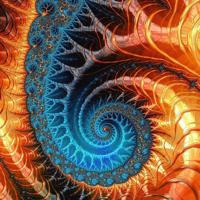
philosophy stuff (possibly)
Show more
2 347
Subscribers
+724 hours
+437 days
+16230 days
- Subscribers
- Post coverage
- ER - engagement ratio
Data loading in progress...
Subscriber growth rate
Data loading in progress...
_Michael_Baxandall_Patterns_of_Intention_On_the_Historical_Explanation.pdf18.26 MB
This book is an inquiry into the historical understanding of pictures -- something sought not only by art historians but by anyone who looks at a picture in the knowledge that it is old or comes out of a culture different from his own. Michael Baxandall begins by developing a scheme for the explanation of concrete historical objects in general, taking as an example how we think about a complex artifact such as a bridge, the Forth Bridge in Scotland. He then shows how this scheme is adapted to the explanation -- or inferential criticism -- of pictures. Analyzing in detail Picasso's Portrait of Kahnweiler, Chardin's A Lady Taking Tea, and Piero della Francesca's Baptism of Christ, Baxandall discusses the painter's goal, his sense of what is wanted from him and what he wants, the market in which he works, the culture from which he draws resources, his relation to other painters, and the use he makes of philosophical or scientific ideas. Baxandall then reflects on how far we can understand the mind of an artist living in a different culture and to what extent we can test and evaluate a historical interpretation of a picture. Braxandall does not claim that the method of inferential criticism is the only way to think about pictures. But if we accept that behind a superior picture there is a superior organization -- perceptual, emotional, and constructive -- it seems evident that attempting to discover the artist's intentions will sharpen our legitimate satisfaction in the picture itself.
👍 1
The_intelligence_of_art_Crow,_Thomas_E_,_1948_1999_Chapel_Hill_University.pdf22.83 MB
👍 2
With this book, Thomas Crow contributes a refreshing analysis of the present state of art history, the practice of interpreting art and making it "intelligible." He aims to relocate the discussion of theory and method in art history away from models borrowed from other disciplines by presenting what he considers three of the most successful and challenging works in the literature of art history: Meyer Schapiro on the Romanesque portal sculpture of the abbey church of Sainte Marie in the French town of Souillac, Claude Levi-Strauss on the Native American masks of the Northwest Coast, and Michael Baxandall on the limewood sculptors of Renaissance Germany.
Sketching the history of trends in art history--from description and biography, to more recent social-historical methods, to the latest wave of postmodernist approaches--Crow sets out a course that affirms the rich and valuable tools of language and methodology developed by generations of art historians while recognizing the important contribution of recent theory in raising the interpretive stakes.The Intelligence of Art offers nothing less than a concrete new way to grasp the infinitely complex operations of human intelligence in artistic form.
… the greatest art seems secreted, not constructed
—Susan Sontag, On Style
❤ 3🔥 1
Art is not imitation of nature but it’s metaphysical supplement, raised up beside it in order to overcome it.
—Friedrich Nietzsche, The Birth of Tragedy
❤ 2🥰 1
There is no happiness other than that of intelligence. I think people like Rousseau, Montaigne, Diderot all attained it.
—Marguerite Duras, “I Thought Often…”
❤ 5
Choose a Different Plan
Your current plan allows analytics for only 5 channels. To get more, please choose a different plan.
